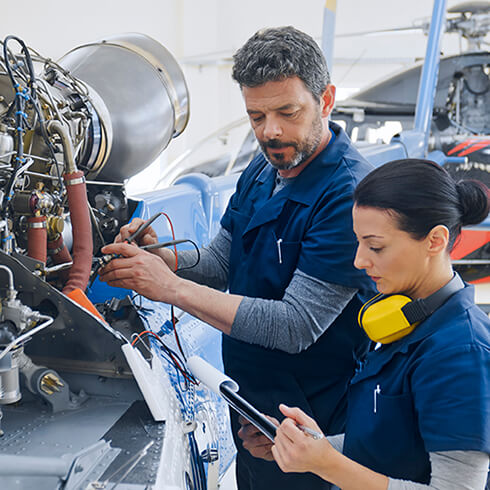Just as the heart keeps our bodies running smoothly, machinery is the lifeblood of any manufacturing operation. When your heart isn’t well-maintained, your body’s efficiency suffers, and the same is true for machines. Equipment breakdowns slow down productivity, disrupt timelines, and impact your bottom line. But, just like maintaining a healthy heart through regular checkups, preventive maintenance ensures your machinery operates at peak performance, prolonging its life and reducing costly disruptions.
This article explores how preventive maintenance acts as the heart-healthy routine for your equipment, keeping your operations in top shape and preventing unexpected downtime. Let’s break down how it works and what steps you can take to ensure your equipment stays strong and reliable.
Spotting the Warning Signs: Listen to Your Equipment
Just like your body sends warning signals when your heart needs attention—like shortness of breath or chest pain—your machines also give off signs when they need maintenance. Without preventive maintenance, machines cannot consistently meet production targets or quality standards. Implementing robust maintenance practices can yield benefits like reduced injuries, fewer defects, higher yields, and increased asset utilization. In fact, studies show that integrating preventive maintenance can reduce downtime by as much as 40%. This is not just about fixing what’s broken but ensuring that your equipment is always in top shape, helping you avoid costly delays and maintain smooth operations.
Neglecting preventive maintenance can lead to serious “health” problems for your equipment, when warning signs are ignored. Look for these warning signs of a machine at risk:
- High frustration with plant employees
- Increased unplanned downtime
- Rising scrap rates
- Maintenance budget overruns (especially overtime)
- Negative trends in KPI’s (such as Mean Time Between Failures, Mean Time To Repair, etc.)
- Growing cost of MRO inventory
Properly maintained machines guarantee consistent production and high-quality results. Introducing a preventive maintenance program is the foundation of reliability-centered maintenance. This approach minimizes equipment failures, maximizes uptime, and ensures seamless operations, similar to how regular exercise strengthens your heart and body.
Building a Strong Preventive Maintenance Plan: A Routine for Your Equipment’s Health
Studies show that well-executed preventive maintenance plan, can reduce overall maintenance costs by 25%2. That’s not just about saving money—it’s about avoiding the ripple effect that downtime has across your entire operation. Performing an annual audit is essential to maintaining the health of your machinery. A regular maintenance routine checks your equipment’s “vitals,” ensuring it can keep running smoothly without the risk of sudden breakdowns.
A crucial element in developing an effective plan is identifying the link between past failure events and the current maintenance system. This analysis helps ensure that preventive maintenance activities are targeting the right equipment at the optimal intervals. This valuable insight will guide improvements in your new program.
3-step process to create or refine your preventive maintenance plan:
- Assess the Current Plan: Review how often maintenance is performed and the equipment’s condition.
- Analyze Failure History: Look at past breakdowns and their frequency.
- Optimize Work Instructions: Ensure clarity in maintenance steps, ensuring safety and efficiency.
A thorough plan strengthens the “heart” of your manufacturing, keeping machines working efficiently while preventing sudden and expensive failures.
Take Action: A “Heart-Healthy” Routine for Your Equipment
Implementing a preventive maintenance program doesn’t have to be overwhelming—think of it like adopting a healthier lifestyle for your equipment. It ensures your machinery is always in top condition. Here’s how you can start:
- Assess Your Equipment: Prioritize the most critical machines in your operation.
- Create Custom Schedules: Tailor maintenance routines to your machines’ needs.
- Incorporate Predictive Technology: : Using real-time monitoring tools for your machines.
- Use CMMS Tools: Leverage tools like CMMS (Computerized Maintenance Management Systems) to streamline maintenance tasks, track performance, and keep things running smoothly.
- Train Your Team: Ensure your maintenance team understands how to keep the machines “fit” and can handle routine tasks.
The Key to Long-Term Success: A Healthy “Heart” for Your Machinery
Just like taking care of your heart through preventive measures helps you avoid serious health issues, a robust preventive maintenance program extends the life of your machinery, keeping your production lines healthy and operating efficiently and effectively. You shouldn’t neglect regular checkups and healthy habits for your body, and the same logic applies to your machines.
With a structured plan, you’ll keep your equipment strong—ensuring long-term success, reducing costs, and maintaining smooth operations for years to come. Let us help you build or refine your preventive maintenance strategy, ensuring the health and longevity of your most critical assets.






